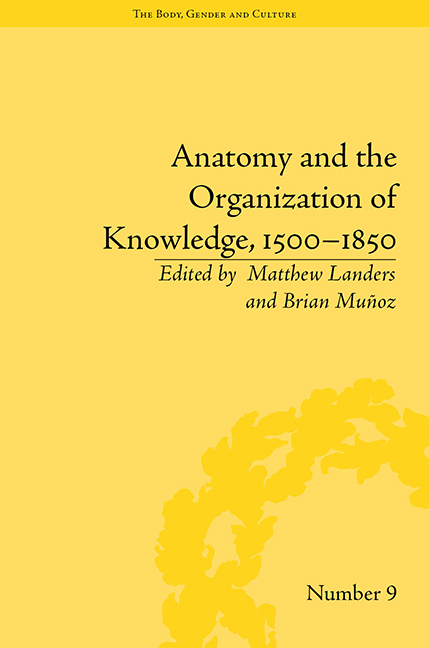Book contents
- Frontmatter
- CONTENTS
- List of Contributors
- List of Figures
- Introduction
- Part I The Body as a Map
- Part II The Collective Body
- Part III Bodies Visualized
- 10 Visualizing Monsters: Anatomy as a Regulatory System
- 11 Anatomy, Newtonian Physiology and Learned Culture: The Myotomia Reformata and its Context within Georgian Scholarship
- 12 Art and Medicine: Creative Complicity between Artistic Representation and Research
- 13 The Internal Environment: Claude Bernard's Concept and its Representation in Fantastic Voyage
- Notes
- Index
10 - Visualizing Monsters: Anatomy as a Regulatory System
from Part III - Bodies Visualized
- Frontmatter
- CONTENTS
- List of Contributors
- List of Figures
- Introduction
- Part I The Body as a Map
- Part II The Collective Body
- Part III Bodies Visualized
- 10 Visualizing Monsters: Anatomy as a Regulatory System
- 11 Anatomy, Newtonian Physiology and Learned Culture: The Myotomia Reformata and its Context within Georgian Scholarship
- 12 Art and Medicine: Creative Complicity between Artistic Representation and Research
- 13 The Internal Environment: Claude Bernard's Concept and its Representation in Fantastic Voyage
- Notes
- Index
Summary
This essay considers the constructive intellectual system revealed by the methodical examination of monsters’ visible anomalies during the early modern period. The images and texts that resulted from the study of monsters provided a model of anatomical knowledge that became a valid alternative to the normal ideals promoted by anatomists like Andreas Vesalius, who upheld the idea that truth lied in practice-based processes and their textual and visible translations. The ways in which monstrous bodies were explored echoed these practices and thus reinforced the epistemological maquette proposed by early modern dissections of normalized human bodies.
The question of ‘monsters’ engaged several fields of knowledge in the sixteenth century: medical traditions from ancient and medieval to early modern sources; theological disputes from antiquity to the Middle Ages; mythological writings from ancient authors and their fantastic adaptations in the Middle Ages; and finally, popular culture informed by selected samples of medical, theological and mythological themes. As medical inquiries grew stronger during the sixteenth and seventeenth centuries – fuelled by first-hand anatomical observations – the second, third and fourth components that defined the monstrous grew weaker in published works. The causes of monstrousness were not understood solely as the results of the opposition between devilish and divine forces, or only as the product of sympathetic magic during pregnancy. Increasingly, methodical explanations were used to shed light on the origins of physical deviance.
- Type
- Chapter
- Information
- Anatomy and the Organization of Knowledge, 1500–1850 , pp. 145 - 156Publisher: Pickering & ChattoFirst published in: 2014

